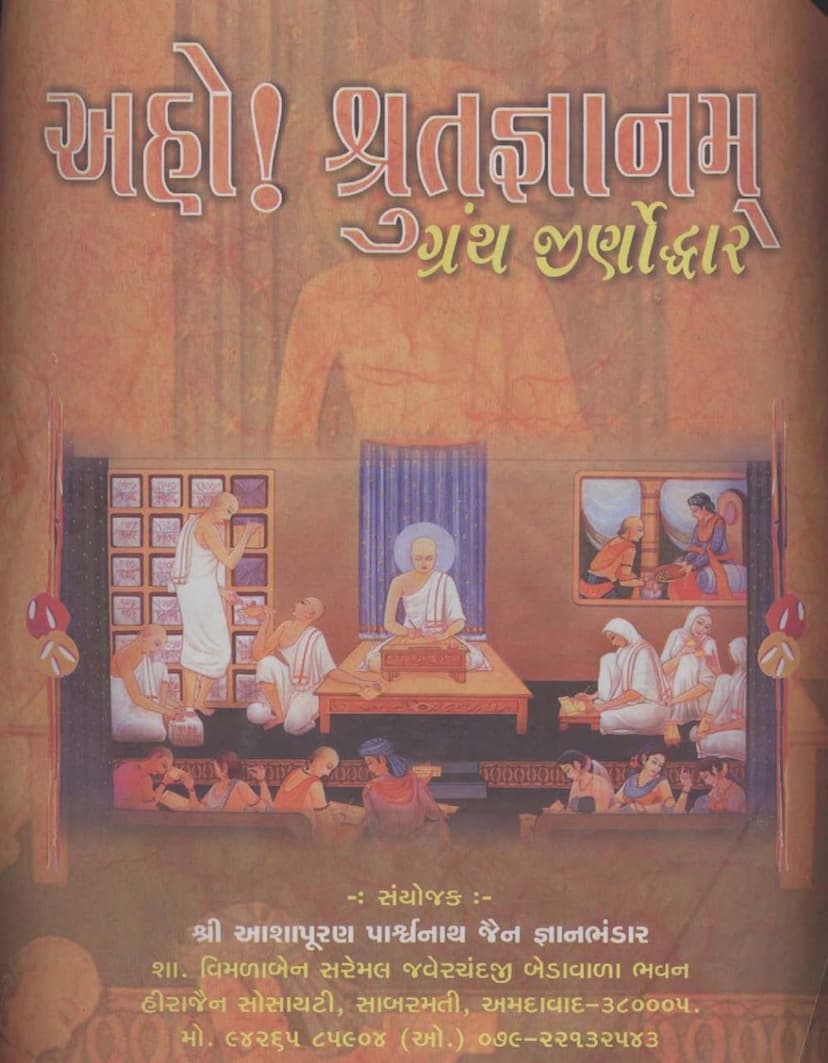Laghu Prabandh Sangraha
Added to library: September 2, 2025

Summary
The book "Laghu Prabandh Sangraha" by Jayant P. Thaker, published by Oriental Research Institute Vadodra in 1970, is a critical edition and study of an anonymous Jain text containing ten short narrative anecdotes (prabandhas). The work is significant for its contribution to the corpus of Jain literature, particularly in the "Prabandha" genre, and for its insights into medieval Indian history and culture.
Key Aspects of the Book:
- Critical Edition: The book presents a critically edited version of the "Laghu Prabandha Sangraha" based on three primary manuscripts. The editor, Jayant P. Thaker, meticulously analyzed these manuscripts to reconstruct the text, noting variations and providing footnotes for scholarly reference.
- Content: The "Laghu Prabandha Sangraha" comprises ten distinct prabandhas, each recounting a historical or semi-historical anecdote. These stories feature various historical and possibly mythological figures, including kings, ministers, scholars, and courtesans. The prabandhas cover themes of generosity, political intrigue, cultural practices, and religious life in medieval Western India, with a focus on the Jain tradition.
- Historical and Cultural Significance:
- Historical Bearing: The prabandhas offer valuable information about medieval Indian history, particularly the reigns of kings like Jayasimha Siddharaja of Gujarat and figures contemporary to him. The editor provides extensive comparative analysis with known historical sources, identifying historical personages and events, while also noting areas where the text might contain folklore or embellishments. The book discusses the historicity of various characters and events, including battles, royal courts, and administrative structures.
- Cultural Insights: The text provides a rich tapestry of medieval Jain society and culture. It sheds light on:
- Social Hierarchy: The rigid caste system, the status of Brahmins, merchants, and other classes, as well as the perceived lower status of certain professions like oil-men and the contempt for Malungas (Chandalas).
- Daily Life: Information on food, attire, customs like Sati (self-immolation), beliefs in omens, the importance of pilgrimage, and the intricacies of royal and domestic life.
- Arts and Entertainment: Mentions of various arts such as architecture, sculpture, music, dance, and magic shows. Pastimes like gambling, dice games, and intellectual contests (literary battles) are also described.
- Religious Practices: References to Jain deities, temples, ascetic communities (like the Nath sect), and religious vows.
- Linguistic Features ("Jaina Sanskrit"): The book delves into the unique linguistic characteristics of the text, often referred to as "Jaina Sanskrit." This style is characterized by its simplicity, colloquialism, a blend of Sanskrit with Prakrit and Old Gujarati words, and regional dialectical influences on syntax. The editor's preface and the appendices provide a detailed lexicographical study of these unique linguistic elements.
- Authorship and Date: The author of the "Laghu Prabandha Sangraha" remains anonymous. However, based on internal evidence, the editor places its composition between 1243 A.D. and 1409 A.D., with a strong probability leaning towards the latter half of the thirteenth century. The editor argues that the text is likely the work of a single author from Western India, possibly Gujarat.
- Comparative Study: A significant portion of the book is dedicated to a comparative study of the prabandhas in "Laghu Prabandha Sangraha" with their versions found in other well-known Prabandha works like "Prabandha-cintamani" and "Prabandha-kosa." This comparison helps to establish the relative age and unique contribution of the "Laghu Prabandha Sangraha" to the genre. The study suggests that the versions in this text are generally the earliest.
- Lexicographical Study: Appendix A provides an extensive lexicographical analysis of the peculiar words and expressions found in the text, offering their meanings, etymologies, and comparisons with contemporary languages and other Jain texts. This is a crucial component for understanding the nuances of "Jaina Sanskrit."
- Indices: The book includes comprehensive indices for names and verses, facilitating research and reference.
In essence, "Laghu Prabandha Sangraha" is a scholarly work that not only makes a critical edition of a significant Jain text available but also provides a deep dive into its historical, cultural, and linguistic aspects, making it a valuable resource for scholars of Jainism, medieval Indian literature, history, and linguistics. The project of "Gruth Jiruoddhar" (restoration of ancient texts) under which this publication falls highlights the importance of preserving and making accessible India's rich literary heritage.